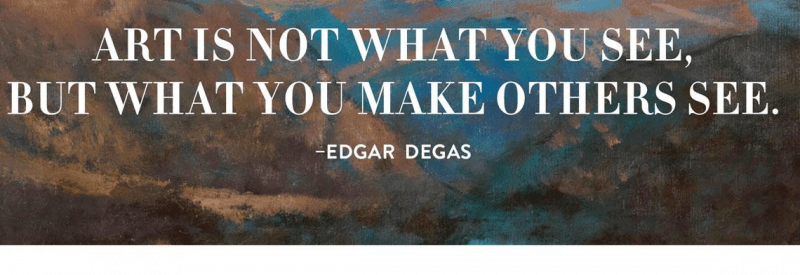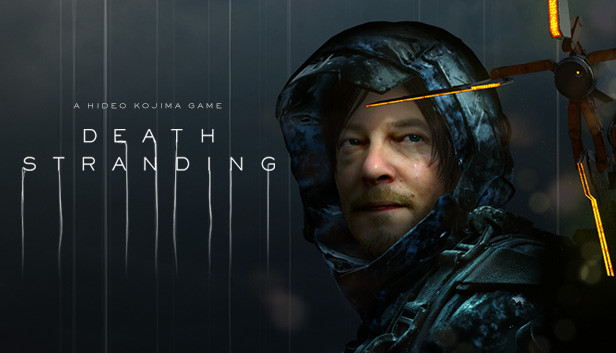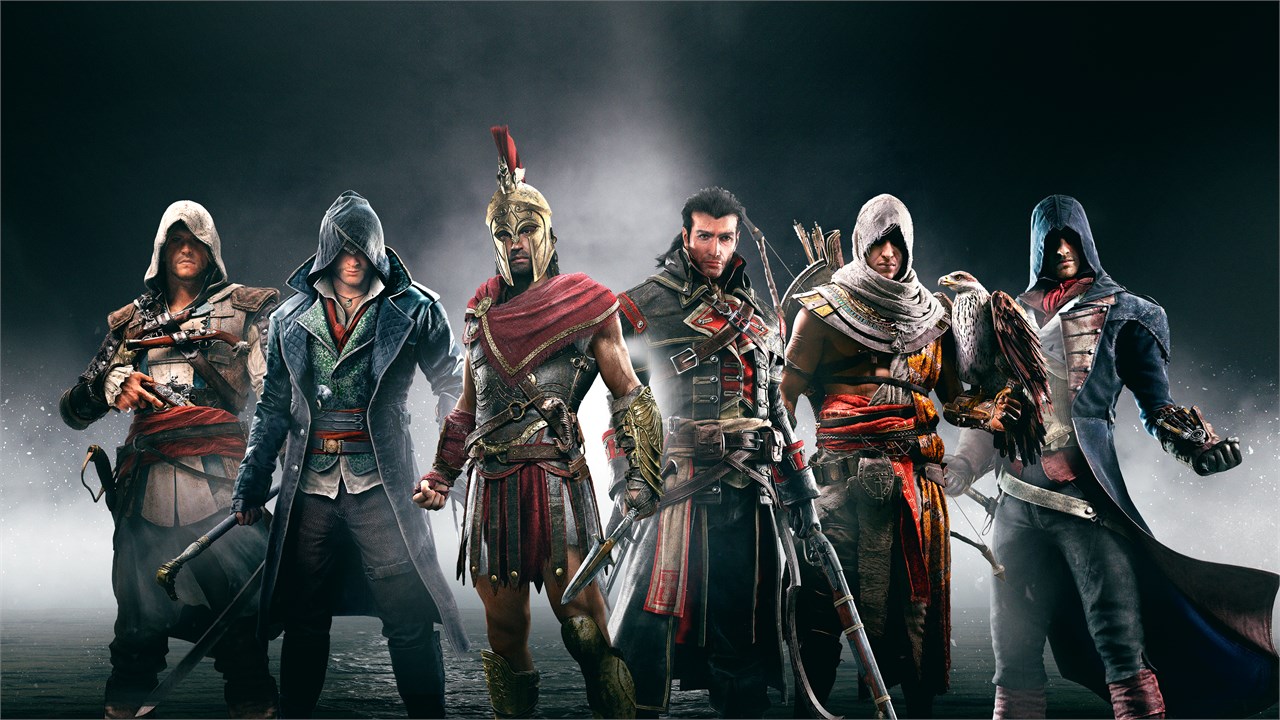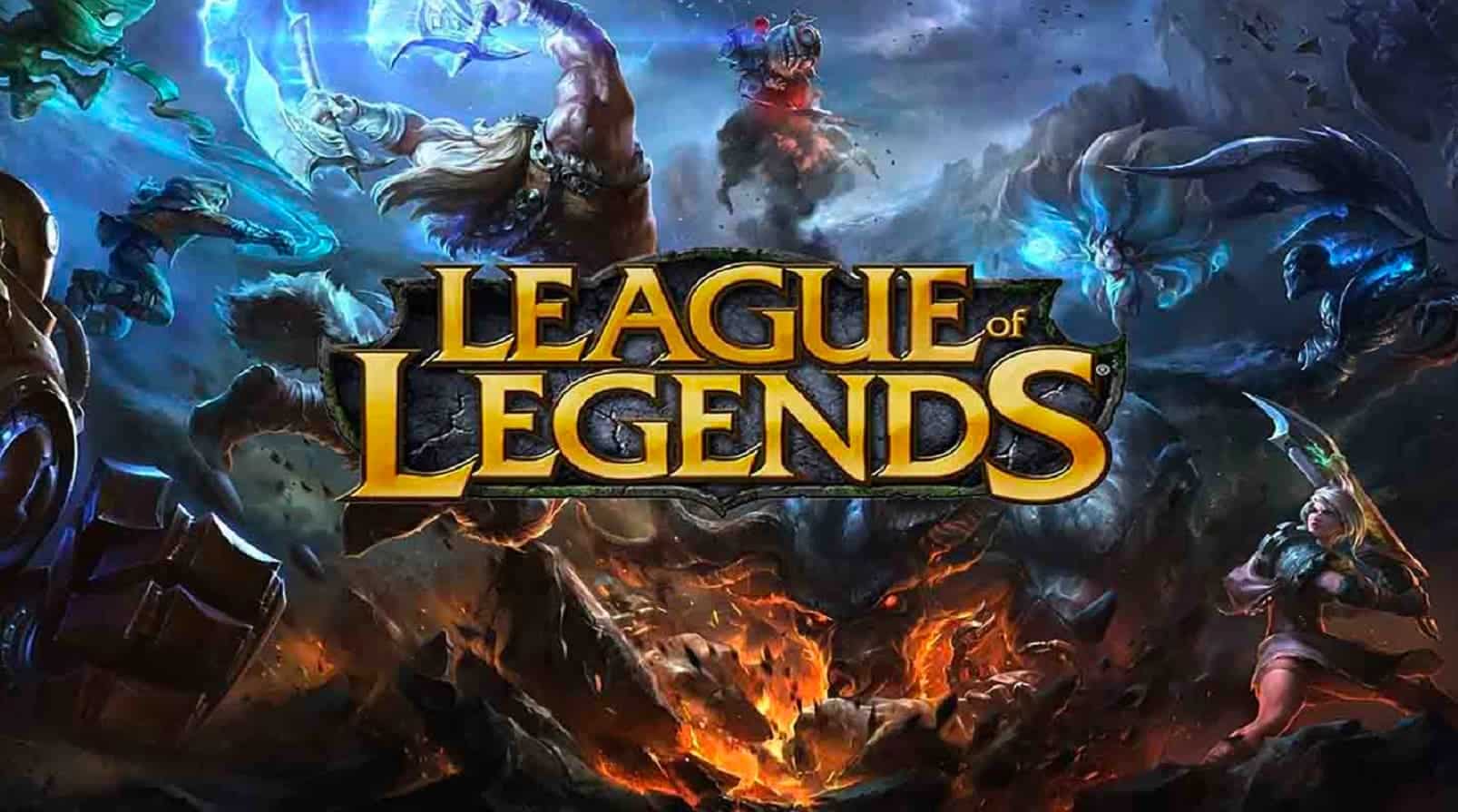Next step in the Evolution of Art
"Art is not what you see, but what you make others see”- Edgar Degas. When you ask “What is art?”, there could be several answers. It could be a magnificent painting that conveys a strong feeling to the viewers through the use of different colors together with a breath-taking scenery; it could be a famous book that shows the readers some new insights into the meaning or meaningless of life; or it could be a play or a movie that uses some insane acting skills to explore the power of fate vs free will. These would all be correct answers as art has evolved throughout history from those simple cave drawings to now digital content. There have even been some calls to start considering games as a new form of art. As someone who spends a bunch of my time around games and studying in AP English class, I cannot stop myself from deeply analyzing the games I play. After watching countless game reviews and also playing a dozen of recently made games myself, I am starting to see the similarity between games and existing forms of art. While not all games should be considered to be art, some of them shares important qualities like a central purpose other than just to entertain, or the use of symbolism to compare the game world to the society, with other forms of art. These games should be considered a work of art as they bring an emotional and meaningful experience to the player similar to any books, movies, or painting that are also considered art.
Probably the biggest opposing argument is that games only serves as something to help relax and entertain the players (Bourgonjon, Jeroen). And I would actually agree to this to some degree. However, when viewing any other forms of art, without analyzing the settings, plot, characters, etc, the same can be said for them. Even though the creator of a piece of art did insert their own message or a moral lesson, the viewers can easily ignore this message and experience that piece of art just to bring happiness or relaxation. Game creators nowadays often put a lot of thoughts and lessons into their games instead of just simply making a game that only serves as a tool for entertainment because it attracts more players and gives their games a central theme that developers can build a complex story around. One game that I will be mentioning throughout this blog is Death Stranding by Hideo Kojima.
I recently finished the story of the game and I felt that this game is one of the games that I would consider to be art. One of the many themes in the game is the meaninglessness of life similar to the Stranger. The main character in Stranger had no emotional connections to people or objects in the world. He did not even show any emotion at his mother’s funeral and shot another person many times without even thinking about the consequences. In Death Stranding, the character you play as, Sam, voiced and acted by Norman Reedus, has almost the same experience. His mother died right in front of him begging him to reconnect an America that is separated by souls that are held in the world of the living due to their strong emotions towards it like love or hatred. Instead of showing any emotion and agreeing to his mother’s dying wish, he looked at her dead body with an emotionless face and rejected her wish. He wanted to stay away from other people because of a fear of being touched by others. He thought there was no meaning for this quest and eventually it will fail again. As the story in Stranger and Death Stranding progress, the viewer can see both characters change. Meursault began to show emotions towards the end of the story when he was locked in a jail cell waiting for his appeal or execution. Even though the reader does not have any influence on Meursault’s development, we can still see the events that led up to it. In Death Stranding, because it is a game, the player’s actions have a huge impact on Sam’s development. Sam is a delivery man that delivers resources manually because the lack of connections between the separated cities. While this seems like an easy task, the game creator added in inconveniences like cliffs, rivers, terrorists, BTs(souls that are stuck in the world of the living), etc. This is where we see and cause Sam’s development. You can build bridges, ladders, roads, safe house, to protect yourself from danger. At the same time, what you have built for yourself is generated in other player’s worlds. While you might think what you have built is useless, it might be a life saver for someone else. As Sam’s journey to travel across America unfolds, he begins to see the effects of his, or the player’s, actions on NPCs and other players. Every time, you complete a delivery, the recipient gives you likes and explains the importance of that package. Every time, someone else uses the structures you built, you get more likes. The game creator wants us to know that nothing is meaningless and that even the smallest actions can be impactful to someone. Eventually at the end of the story, Sam overcomes his fear of being touched and is connected deeply to everyone he has helped whether it is another real person or an NPC. This game served a purpose other than just for simple enjoyment. The game creators are trying to convey a message similar to the Stranger or any art forms. So much thought is put into every single action and every detail so that players will learn something at some point during the gameplay. I know not every game is like this, but it is a shame to see that games that have such deep meanings being treated as meaningless and only for fun.
Another important quality of art is whether its content can spark interesting and meaningful discussions((Bourgonjon, Jeroen). The most obvious discussion is whether a piece of art is good or not. Someone might say that Harry Potter and the Deathly Hallows is a garbage book and some might say it is the best book in the entire series. This is also the case for games. Cyberpunk 2077 had one of the most controversial ratings ever because it had an amazing PC version and an extremely buggy console version. Most interestingly though, a piece of art often starts discussion on the theme of the story. One of the plays we read, Oedipus Rex, sparked an intense debate over Fate vs Free will. Some argued that Oedipus is a victim of his tragic fate and nothing that he did could have prevented or cause his tragic end. His fate is the only factor in his exile. The other side argued that his fate played a minimal to no role in his tragic end and his own actions are what led to his exile. Both sides of the debate has sufficient reasoning and evidence, as a result, everyone who participated learned something new from the opposing side. Even though most of us still didn’t change our mind, we at least know the perspective of the other side. This aspect of art is so important for our development as an individual and also as a society because after we know both sides of an argument, we can reach newer heights and a better overall understanding of art. This form of debate between two different ideologies are also incorporated into many games. One of them is the famous Assassin’s creed series. It has been made into a book series and a film because of its huge influence on modern stealth mechanics. More importantly though, this series revolves around a central debate over total freedom and total order.
The game portrays an altered history timeline where many major events like the American and French revolution are actually clashes between 2 factions. The “Templars” wanted total order and a totalitarian government that can control people’s thoughts and actions. The “Assassins” wanted freedom for every one and no government to exert power over them. Both sides of this debate wants the same thing, peace and wellness for their people; however, their approaches are almost opposite. The Templars suppresses people’s minds using their power so there would be peace and no uprising that would cause unrest in the social structure. However, suppressing people’s minds achieves peace at the cost of personal feelings. Their people are lifeless, thoughtless and emotionless. They feel the corruption of the strong government but cannot speak up against it. On the other hand, the Assassins wanted freedom for all but lacks order. The huge void of power created by the removal of the government makes the new society prone to failures and eventual take over of a dictator. While the game is told mostly from the perspective of Assassins, players can still debate for both sides. To encourage this form of debate, the game developers even made a game in the series that is told from the perspective of a Templar to show the players that both sides are working to improve the human race. This central debate made players realize that none of the extremes work as intended and makes us value the stable government that were formed by trial and errors. Similar to Oedipus Rex, this debate has led us to learn the benefits and disadvantages of both sides even though we might clearly support one side of the argument. However, it is that consideration of the other perspective that allows art to progress and evolve into something that can reach more people’s thoughts.
Then there are the debates that are pretty negative due to player’s actions. A perfect example of this would be a toxic chat in an online game(Schiesel, Seth). Toxic, in the gaming world, is a term used to describe someone or something that has a bad attitude or behaviors. Not every game “forces” people to be wholesome like Death Stranding. Especially in multiplayer games like League of Legends or Counter strike, where player’s individual actions can hugely impact other player’s gameplay experience, players tend to resort to toxicity. Often this kind of debate starts with frustration. For example, “Man, why did you go that way?” or “Wow, you really lost that fight.” These comments might seem insignificant, but some players’ egos are the biggest thing I have ever seen. They respond back with “you are also trash, shut up” or something like that and the conversation spirals down into a verbal fight using racial slurs, stereotypes, violence, etc. While this kind of debate does help both players reach some resolution, it is nothing like those debate between the central themes in the Assassin’s Creed series. No new insight is being reached and the method of debate is unacceptable and uncomfortable for the other players who are not involved in the fight, but still want to enjoy the game. This is one of the bad consequences by allowing the player’s actions to alter the gameplay experience. However, this still teaches players to learn the effects of their actions or words and how important it is to be wholesome and encouraging to people you might not even know.
Art needs to evolve over time to keep up with the current culture. Painting evolved into printed book; printed books evolved into films. It is time for art to evolve again. As I have mentioned above, these games possess almost all of the qualities that existing forms of art have. When analyzed deeply, the players can learn about what the creators thought is important and meaningful in life or debate which moral choice is correct. Games also have one single quality that other art forms do not have, the player’s inputs. Players have the power to guide others to understand the game by writing words of encourage and hints or the power to ruin other’s game by destroying their creations and spamming negative comments. How players understand the lesson behind the story is based on how they and other players play(Taskas, Stefani); in all other forms of art, maybe with the exception of music, all have a set lesson behind the artwork that can be obtained by reading, watching, and analyzing the art. I will now step back in the shadows and wait for the gaming community to realize that some of the games they play are not simply made just for enjoyment and should be considered art. I hope that someday, that common perception that games do nothing except cause violence will be stopped and games can earn their rightful place in the world of artistic creations.
Works Cited
Bourgonjon, Jeroen. "The Meaning and Relevance of Video Game Literacy." CLCWeb: Comparative Literature and Culture, vol. 16, no. 5, 10 Dec. 2014. Gale Literature Resource Center, link.gale.com/apps/doc/A451229414/LitRC?u=lom_macombtgps&sid=LitRC&xid=f8fb52db. Accessed 7 Jan. 2021.
Bourgonjon, Jeroen, et al. "Perspectives on Video Games as Art." CLCWeb: Comparative Literature and Culture, vol. 19, no. 4, Dec. 2017. Gale Literature Resource Center, link.gale.com/apps/doc/A529046139/LitRC?u=lom_macombtgps&sid=LitRC&xid=00c40a49. Accessed 7 Jan. 2021.
Camus, Albert, and Matthew Ward. The Stranger. , 1993. Print.
Hunting, Kyra, and Andrew Zolides. "Video Games as Useful Media: A Multiplayer Perspective." Velvet Light Trap, no. 72, Fall 2013, p. 72+. Gale Literature Resource Center, link.gale.com/apps/doc/A345171981/LitRC?u=lom_macombtgps&sid=LitRC&xid=caf16a0a. Accessed 7 Jan. 2021.
Kojima, Hideo. Death Stranding. 2019.
Schiesel, Seth. "The Real Problem with Video Games." The New York Times, 13 Mar. 2018, www.nytimes.com/2018/03/13/opinion/video-games-toxic-violence.html. Accessed 7 Jan. 2021.
Sophocles. Oedipus Rex. PDF ed., 1885.
Taskas, Stefani. "How Do We Make Players Feel like Their Choices in a Game Matter?" Stefani Taskas, 23 Jan. 2020, medium.com/@staskas/how-do-we-make-players-feel-like-their-choices-in-a-game-matter-5fe82db4820d. Accessed 7 Jan. 2021.
Ubisoft. Assassin's Creed Series. 2007-.








Comments
Post a Comment